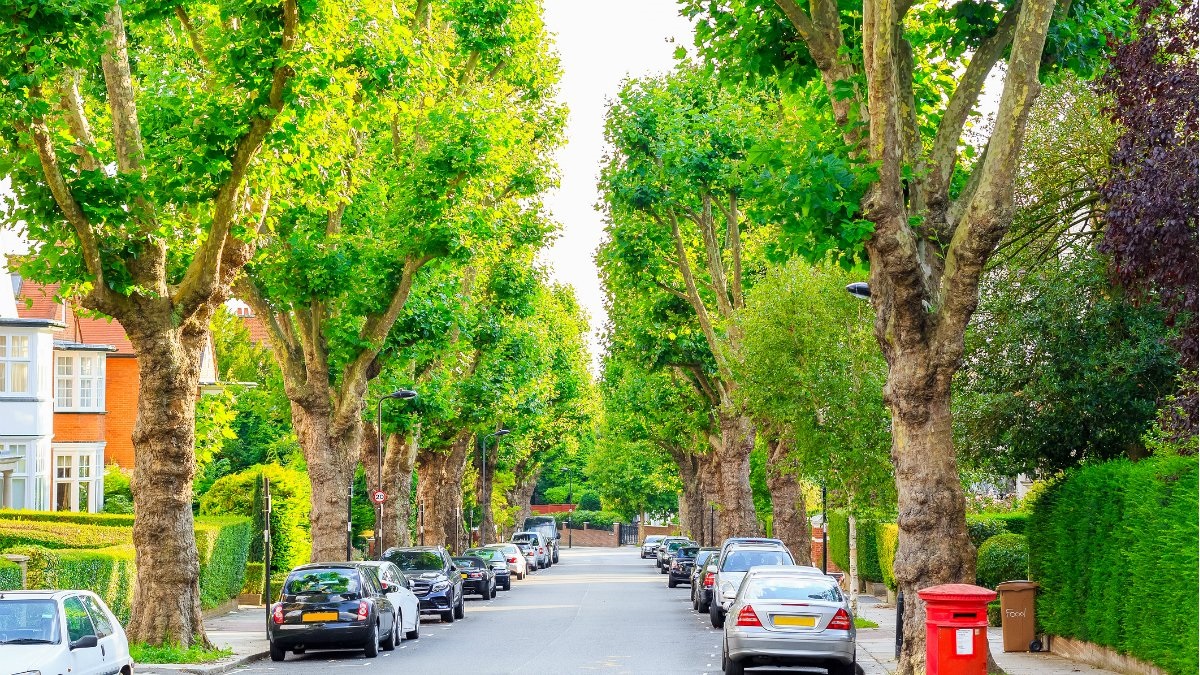
Research confirms that planting roadside trees and bushes significantly reduces air pollution from motor vehicles. While vegetation decreases soot and ultrafine particles, it doesn’t tackle carbon dioxide emissions or ozone pollution. Urgent action is needed to mitigate the health risks associated with vehicular emissions, especially for those living near highways. By embracing nature-inspired solutions and sustainable transportation alternatives, communities can pave the way for cleaner, healthier urban environments.
Amidst mounting concerns over air quality, roadside vegetation emerges as a formidable ally in the fight against vehicular emissions. Led by research affirming the efficacy of green infrastructure, this study explores the transformative potential of planting trees and bushes along highways. While vegetation offers tangible benefits in reducing certain pollutants, comprehensive strategies are imperative to address the multifaceted challenges posed by motor vehicle exhaust. By embracing nature-inspired solutions and sustainable transportation alternatives, communities can chart a course towards cleaner, greener urban landscapes.
Clearing the Air: The Role of Vegetation Along Highways
In the battle against air pollution, nature’s greenery emerges as a powerful ally, particularly along bustling highways. Recent research confirms that planting trees and bushes along roadways effectively filters out harmful pollutants emitted by motor vehicles, offering a glimmer of hope amidst environmental concerns.
Unveiling Nature’s Remedial Touch
“Beyond mere aesthetics, roadside vegetation wields significant benefit towards teemed associate professor of public health at Georgia State University in Atlanta. His sentiments echo the growing acknowledgment of the multifaceted advantages provided by green infrastructure. In a university press release, Greenwald underscores the pivotal role of vegetation in combating air pollution, heralding a breakthrough in environmental stewardship.
However, Greenwald is quick to temper expectations, cautioning against viewing trees and bushes as panaceas for all vehicular emissions-related woes. “While they may not single-handedly resolve the intricate issues tied to motor vehicle emissions,” he stresses, “they undoubtedly mitigate its severity.”
Insights from Groundbreaking Research
At the forefront of this ecological crusade stands Greenwald, spearheading a seminal study that delves into the efficacy of roadside vegetation in curbing air pollution. Sampling air quality along five major highways and interstates in the Atlanta area, the study’s revelations, published in the esteemed journal PLoS One, unveil a compelling narrative.
Comparing air compositions at sites adorned with natural or ornamental greenery against their barren counterparts yields striking differentials. Soot levels register a notable 37% reduction, while ultrafine particles exhibit a commendable 7% decline in areas graced by vegetation. These findings underscore the tangible impact of green infrastructure in purifying our atmospheric milieu.
Nevertheless, Greenwald underscores the nuanced nature of this ecological intervention. While roadside vegetation admirably mitigates soot and ultrafine particle levels, it remains powerless against hazardous carbon dioxide emissions and ozone pollution, necessitating a multifaceted approach to address air quality concerns comprehensively.
A Call to Arms Against Vehicular Emissions
The menace of motor vehicle exhaust looms large, with its deleterious health implications reverberating across communities. From asthma and chronic bronchitis to lung cancer and heart attacks, the toll exacted by vehicular emissions is starkly evident. Urgent remedial measures are imperative, assert researchers, as they shed light on the sobering reality confronting millions residing or working within proximity to major highways in the United States.
Harnessing Nature’s Purifying Potential
The symbiotic relationship between roadside vegetation and air quality is rooted in the multifarious mechanisms through which greenery acts as a natural purifier. Foremost among these is the expansive surface area provided by trees and bushes, serving as a receptacle for airborne particulates. Through this mechanism, pollutants are effectively captured and sequestered, offering a reprieve from the noxious fumes pervading our urban landscapes.
Unraveling the Ecological Tapestry
Previous research endeavors have probed the transformative impact of roadside vegetation on air quality dynamics. Leveraging sophisticated models that factor in variables such as wind patterns, traffic density, and proximity to highways, researchers illuminate the intricate interplay between green infrastructure and atmospheric cleansing. These insights underscore the potential of nature-inspired solutions in addressing contemporary environmental challenges.
Beyond Greenery: A Holistic Approach to Air Quality Management
While the merits of roadside vegetation are indisputable, Greenwald advocates for a comprehensive strategy encompassing diverse interventions to achieve substantial improvements in air quality. Embracing sustainable transportation alternatives, such as robust public transit networks and enhanced pedestrian and cycling infrastructure, holds the key to reducing reliance on motor vehicles. By fostering a culture of eco-conscious mobility, communities can chart a course towards cleaner, healthier urban environments.
In the quest for cleaner air and healthier communities, the role of roadside trees and bushes cannot be overstated. While they offer a promising avenue for mitigating air pollution along highways, their efficacy is not without limitations. To achieve meaningful progress, stakeholders must adopt a holistic approach encompassing sustainable transportation alternatives and nature-inspired solutions. By cultivating a culture of eco-conscious mobility and environmental stewardship, communities can forge a path toward cleaner, greener cities, where the air is not just breathable but revitalizing.
